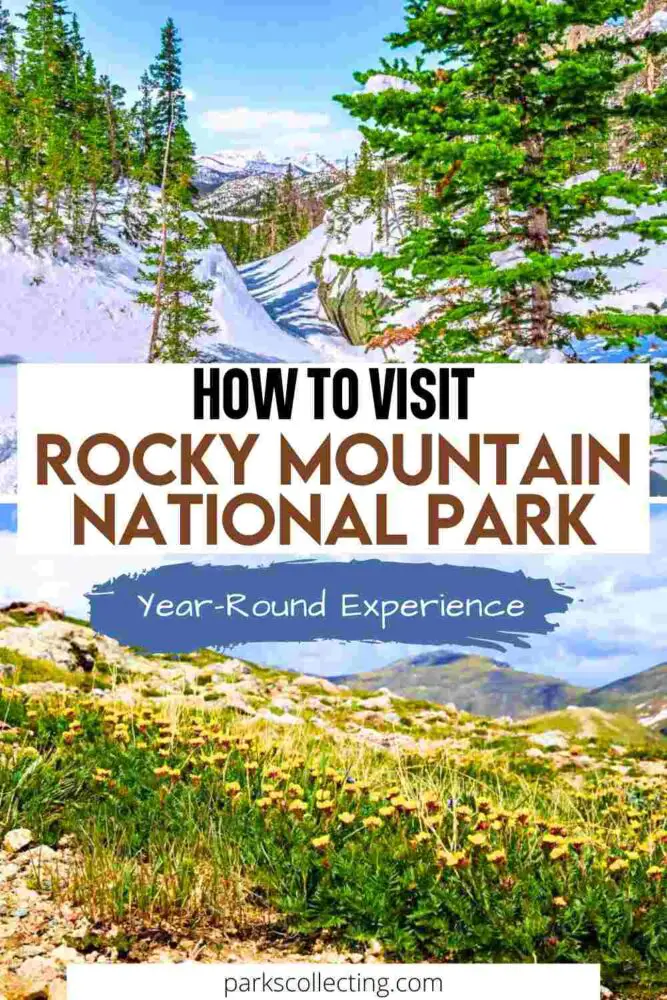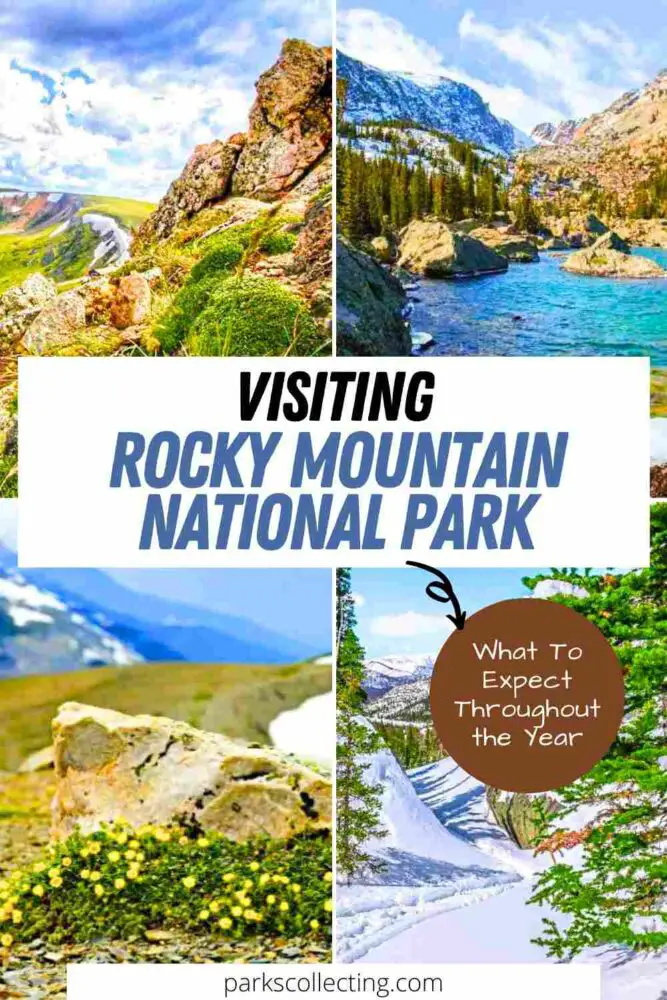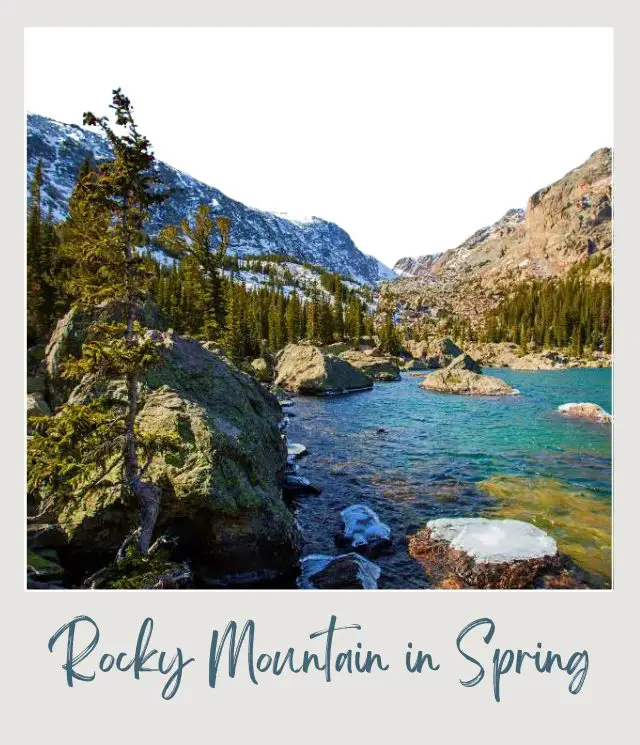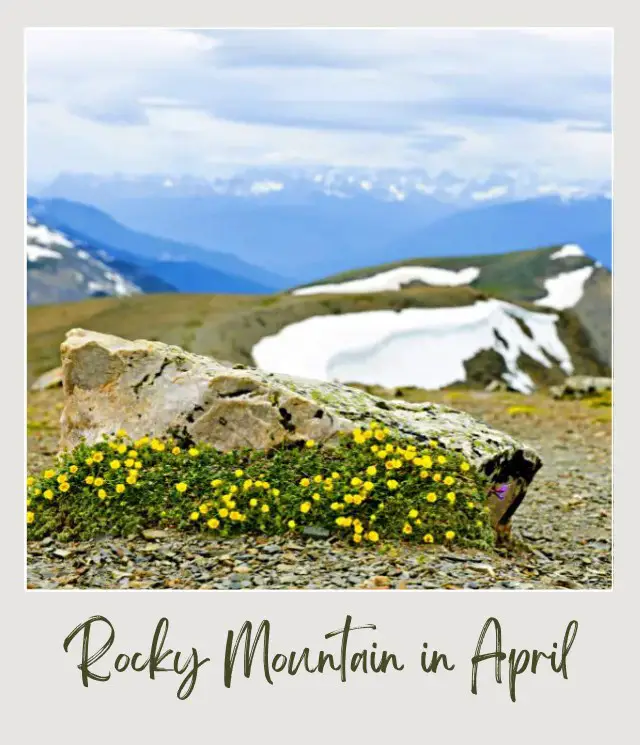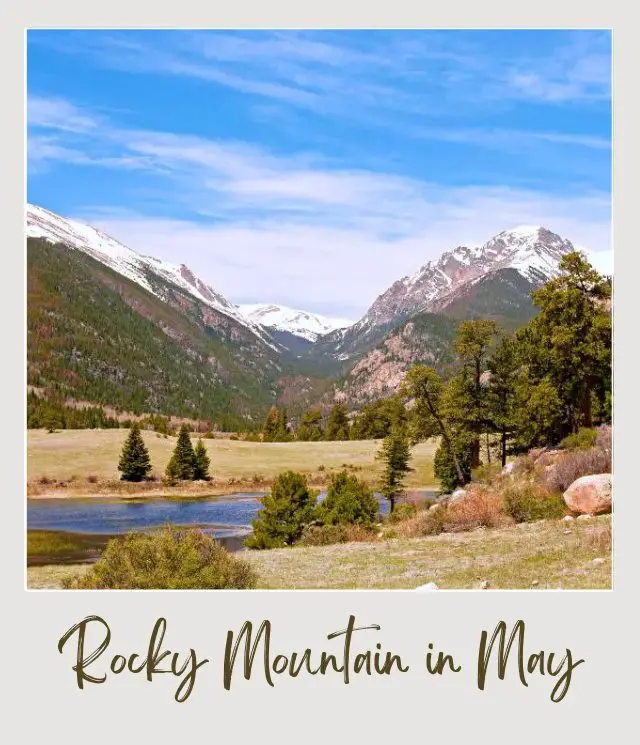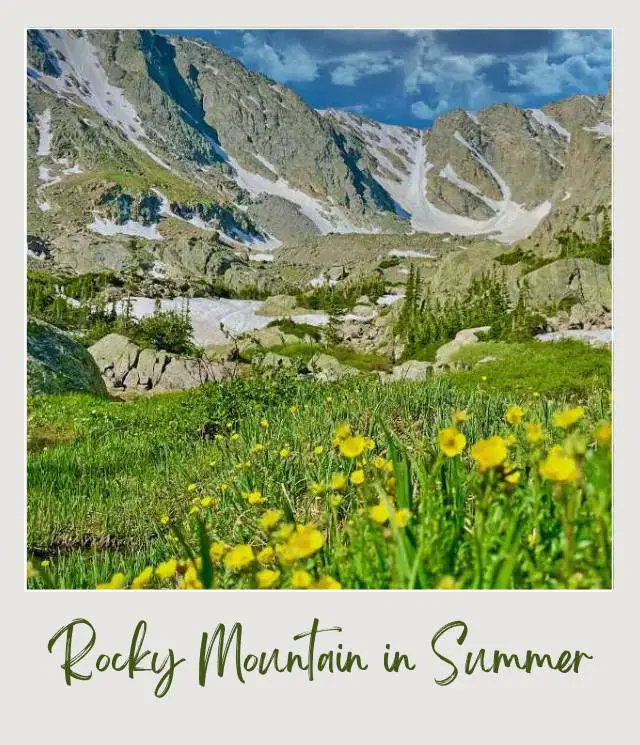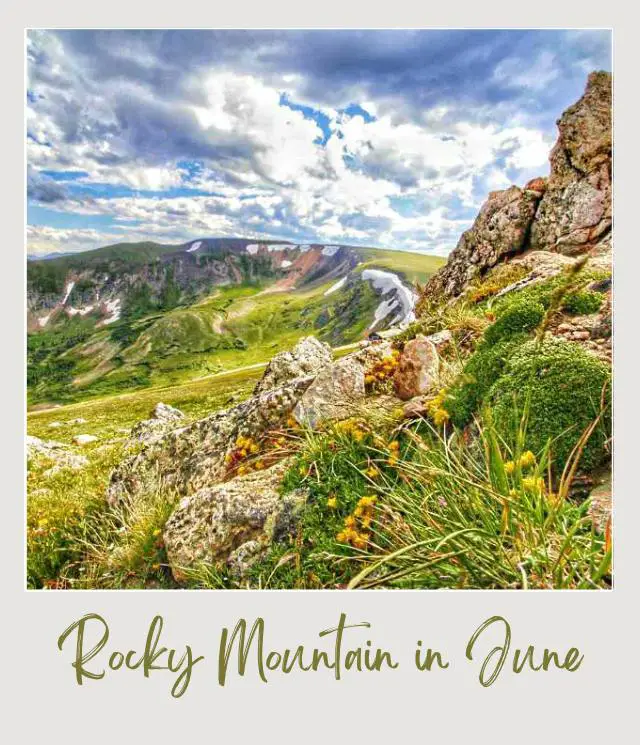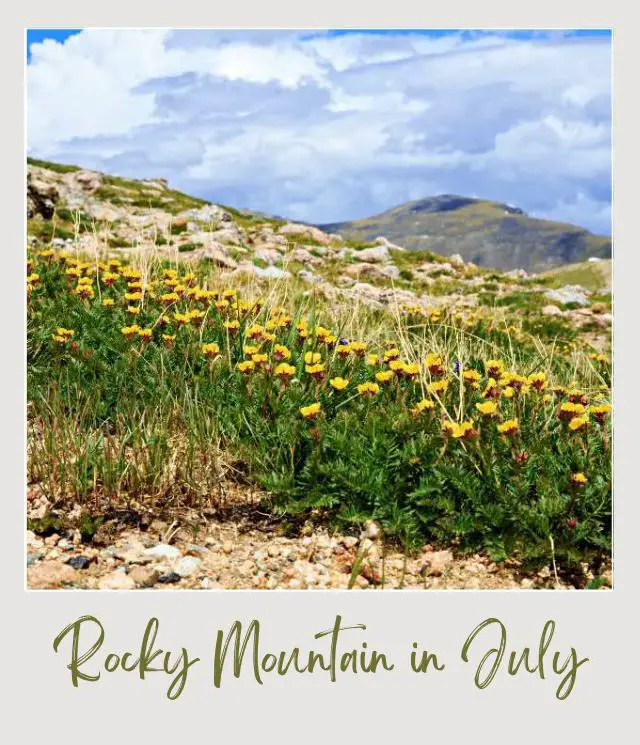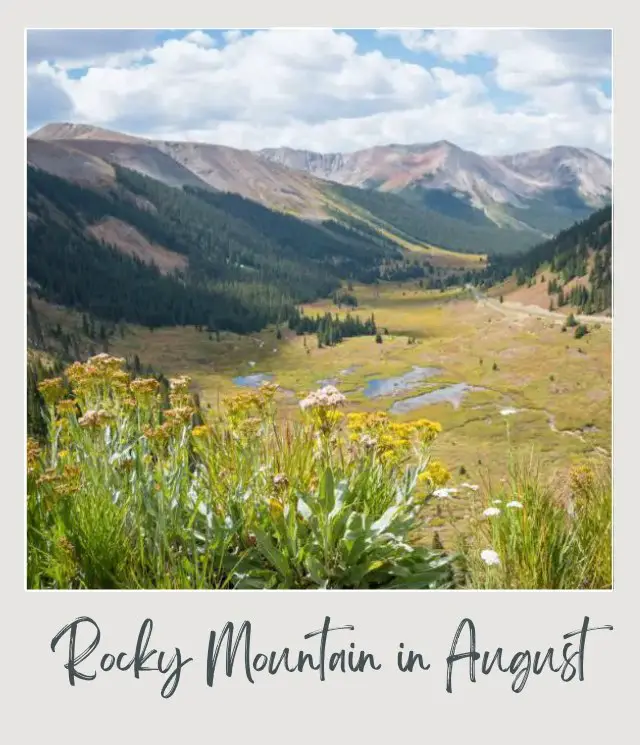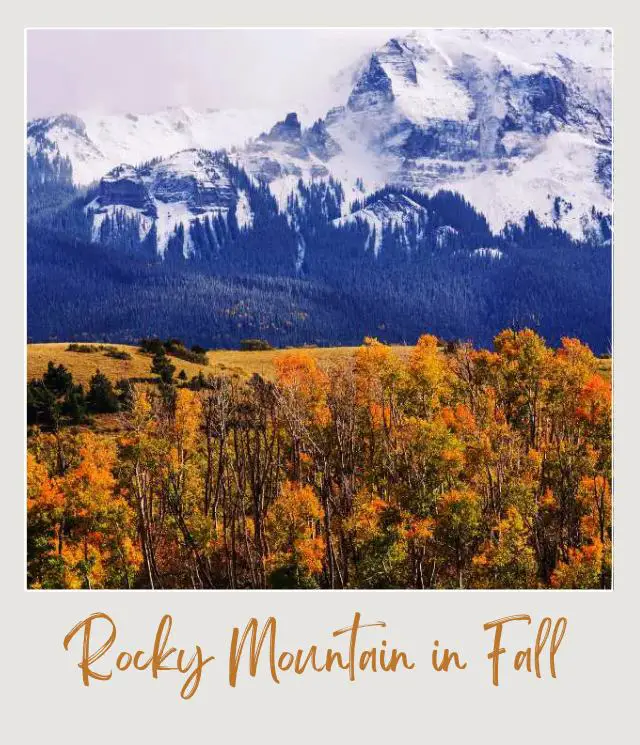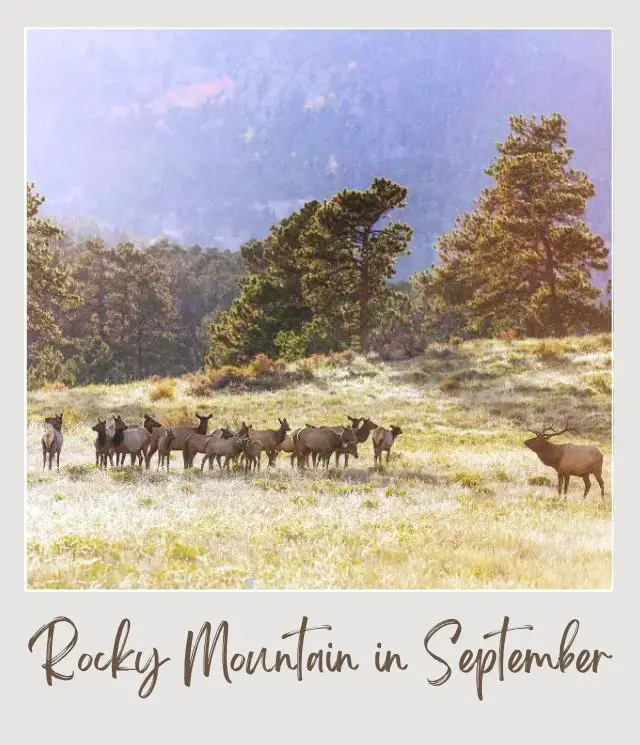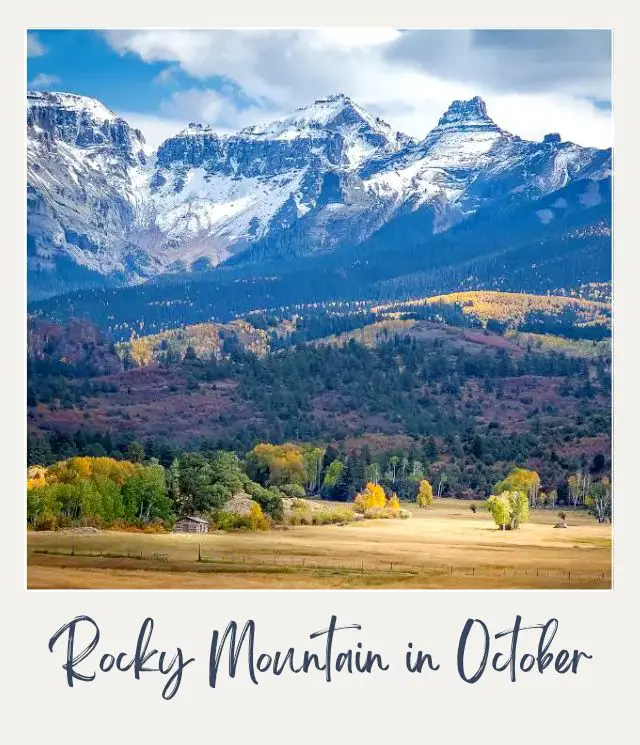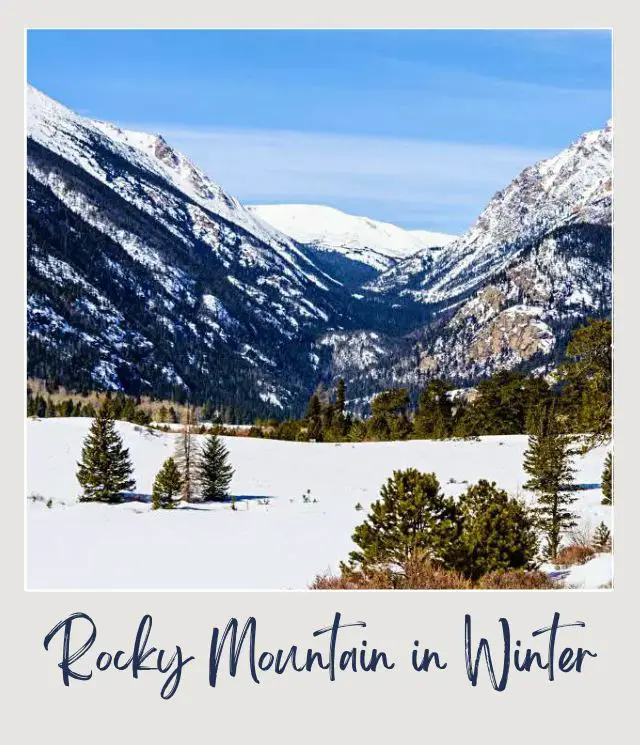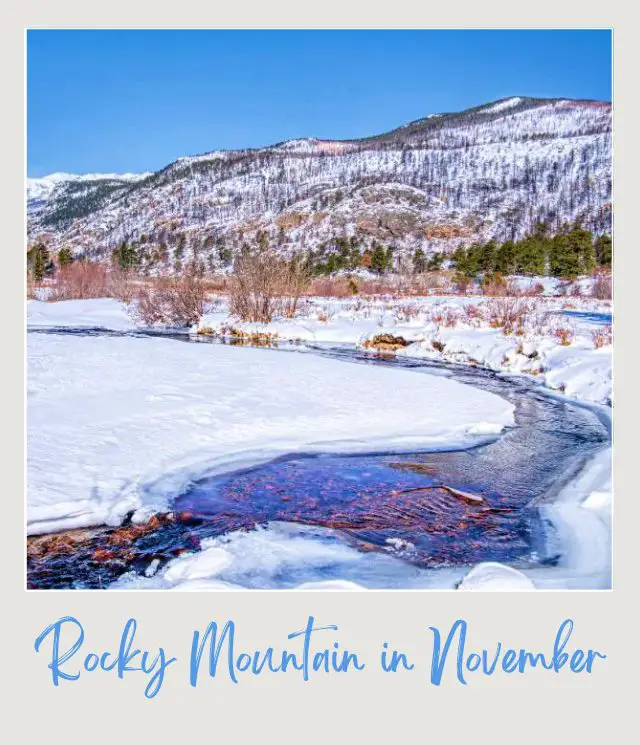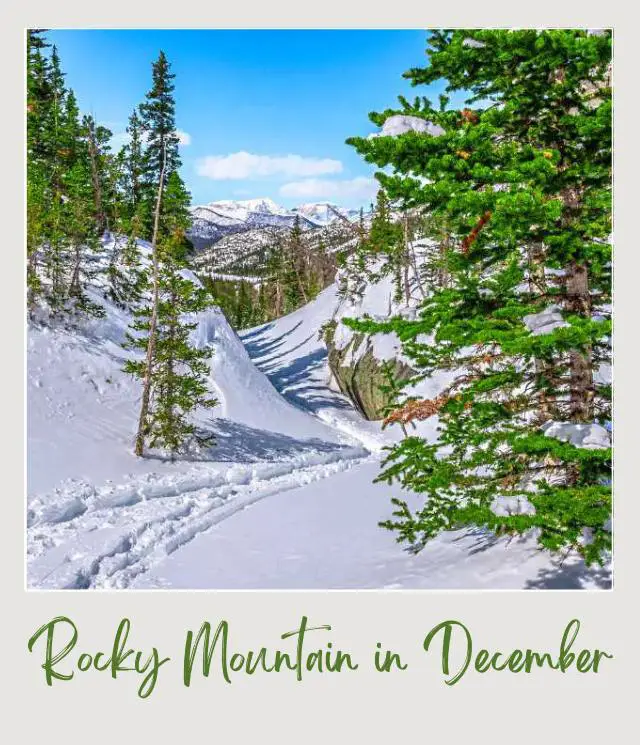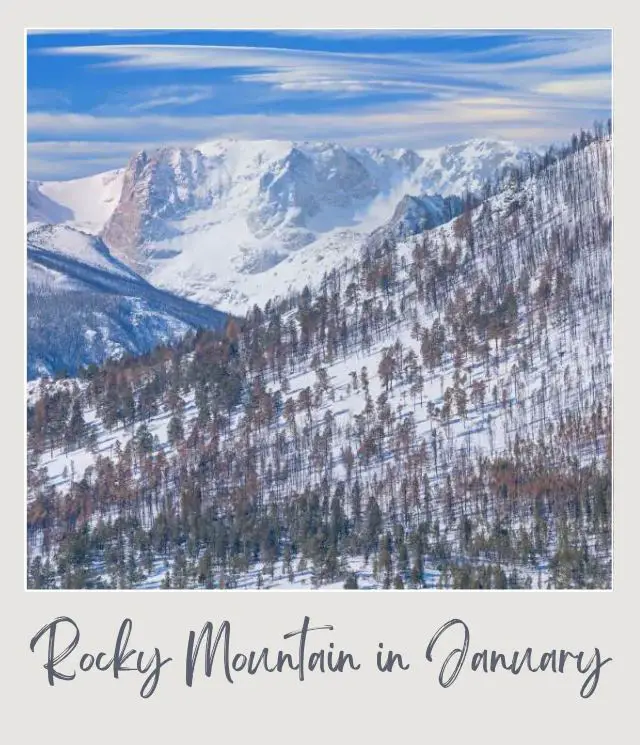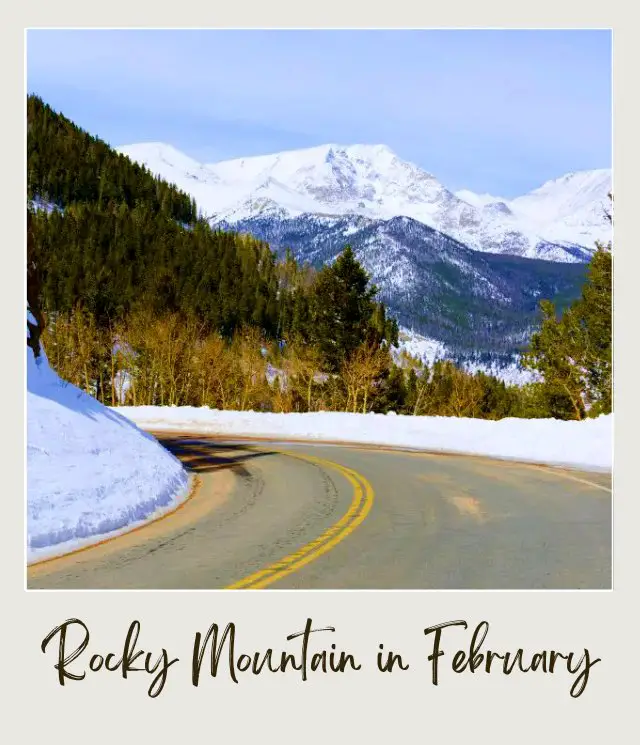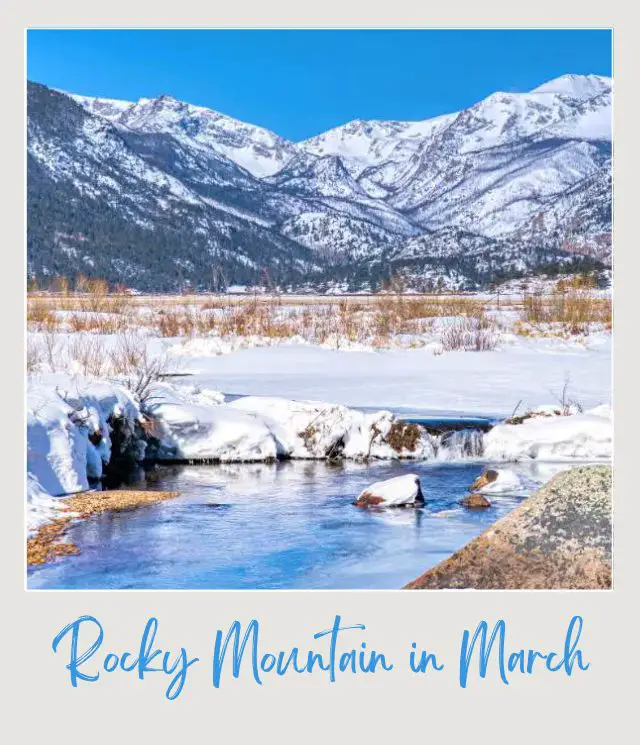Are you thinking about visiting Rocky Mountain National Park but aren’t sure what to expect when you want to go? Then this guide is for you.
I’m James and I’m a national park expert. In this guide, I’ll go into detail for each month about exactly what to expect, so you can plan a trip that suits your needs. I describe the weather in Rocky Mountain National Park you can expect each month, as well as wildlife, wildflowers, special events, permits, and more.
‼️ If you just want a quick snapshot about my thoughts on the best time to visit Rocky Mountain National Park, check out my Best Time to Go To Rocky Mountain National Park guide. ‼️
No time right now to discover what to expect each month when visiting Rocky Mountain National Park? Pin It and save it for later:
Rocky Mountain National Park in Spring (April – May)
Head to Rocky Mountain National Park in spring and you could experience all sorts of climatic conditions. The weather can be very unpredictable at this time of year in particular. Spring at Rocky Mountain National Park falls in April and May, and this period bridges the gap between winter and summer.
Visiting Rocky Mountain National Park in April
Head to Rocky Mountain National Park in April and you will be there during one of the area’s wettest months. In early April, and even toward the end of the month, it could still be snowing. You could also see wildflowers in bloom by the end of April at lower elevations.
Throughout the year, you can expect temperatures and precipitation levels to vary according to the elevation. While it might still feel wintry in the highlands, for example, it may be more spring-like in subalpine regions, and could even feel summery in the lowlands.
Average April temperatures at Rocky Mountain National Park range from 23°F (-5°C) to 43°F (6°C). Do keep in mind, though, that it could be a lot colder or warmer than this on higher or lower ground.
15 days of rain are average for April, as during the previous month of March. Temperatures are a little cooler than those of October, but warmer than November averages. As visitor numbers are relatively low, this can be a good time to avoid the crowds.
Pros
- You may see wildflowers by late April
- It’s warmer than winter and late fall
- The park will be peaceful
Cons
- One of the wettest two months
- Many hiking trails will still be snowy
- Trail Ridge Road doesn’t open until May
Visiting Rocky Mountain National Park in May
The Rocky Mountain National Park weather in May reflects the fact that this is late spring. By now, much of the snow will have melted away, and Trail Ridge Road should reopen sometime before the end of the month.
The weather in Rocky Mountain National Park in May is warmer and drier than during April, with around 13 days of rain on average. Afternoon showers are fairly common. Mean temperatures range from 30°F (-1°C) to 52°F (11°C). Though it can of course be significantly hotter or colder in the lowlands or highlands.
So is May a good time to visit Rocky Mountain National Park? In terms of visitor numbers, the park is quieter than during the following summer months. At lower levels, this is wildflower season, so the park can look very pretty in late spring.
If you want to hike, the lower elevations are a more realistic proposition in May. By late spring, access to higher levels can still be limited, but the park’s lower trails should now be snow-free.
Pros
- Trail Ridge Road reopens in late May
- The park is far quieter than in summer
- Wildflowers are in bloom at lower elevations
Cons
- Access remains limited in early May
- The weather can be unpredictable
- It can still be below freezing at night
- Timed entry permits are needed starting in late May
Rocky Mountain National Park in Summer (June – August)
Visit Rocky Mountain National Park in the summer and you’re picking the most popular time of year to visit. June, July and August are the warmest and driest months, though afternoon thunderstorms aren’t uncommon. The Alpine meadows of the park are generally awash with wildflowers between late June and the middle of July.
Visiting Rocky Mountain National Park in June
The Rocky Mountain National Park weather in June brings a lot of visitors to the area. If you want to see wildflowers carpeting the Alpine tundra, then it’s wise to leave your visit until later in the month.
Though thunderstorms aren’t uncommon, especially in the afternoons, there’s only about half as much rain in June as in April and May. In fact with 7 days of precipitation, this is the driest month of the year. The highest mountain peaks may still be snow-clad, however.
Averages for the park as a whole range between 39°F (4°C) and 63°F (17°C). This is the third-warmest month of the year.
As with July and August, June is a popular time to go to Rocky Mountain National Park. So be prepared for crowds if you do choose to head here in early summer.
Pros
- The driest month
- Trail Ridge Road will be open
- Alpine wildflowers bloom in late June
Cons
- Not as warm as July and August
- Visitor numbers are higher in summer
- Afternoon thunderstorms aren’t uncommon
- Timed entry permits are needed
Visiting Rocky Mountain National Park in July
July is the warmest month at Rocky Mountain National Park. This is also one of the drier months, though you might still see rain and thunder, especially during the afternoons. By July 4th, Old Fall River Road will also be open.
Average temperatures for July at Rocky Mountain National Park range from 45°F (7°C) to 68°F (20°C). At high elevations, though, expect colder weather, while the reverse may be true in the lowlands.
To see Alpine wildflowers, it’s best to visit during early July, as the season tends to run between late June and mid-July.
If you’re thinking of visiting Rocky Mountain National Park for the 4th of July celebrations, then there are fireworks in Estes Park, usually from around 9pm. Of course Rocky Mountain National Park around July 4th is even busier than the average for summer, so do plan ahead if you want to head to the park at this time.
Pros
- Alpine wildflowers until mid-July
- 4th July fireworks at Estes Park
- The warmest month of the year
Cons
- The park can get very busy
- It can still be cold overnight
- Afternoon storms are still fairly likely
- Timed entry permits are needed
Key Events in July:
✳️ July 4th fireworks at Estes Park
Visiting Rocky Mountain National Park in August
The Rocky Mountain National Park weather in August means wetter conditions than in June and July. There are around 9 days of rain, and cold fronts can occur as summer draws to a close. By now, the wildflower season is over, and fall is on the way.
Averages for August at Rocky Mountain National Park range between 45°F (7°C) and 66°F (19°C). Access is still good, so this is a good month for hiking. The park tends to remain crowded, though, until fall begins in September.
As with the rest of summer, afternoon storms can occur in August. In general, though, days are sunny and warm, with lower temperatures overnight.
Pros
- Access is good throughout summer
- It’s generally warm and sunny
Cons
- Wildflower season is over
- Visitor numbers remain high
- Cold fronts may come in by the end of August
- Timed entry permits are needed
Key Events in August:
✳️ Estes Park Wine Festival is held around mid-August
Rocky Mountain National Park in Fall (September – October)
Fall in Rocky Mountain National Park takes place in September and October. The weather really begins to change at this time of year, with some light snow and road closures to be expected.
It’s quieter in fall than in summer, and temperatures don’t tend to drop significantly until October. You can generally see the Rocky Mountain National Park fall colors from mid-September onwards One sentence intro.
Visiting Rocky Mountain National Park in September
The Rocky Mountain National Park weather in September tends to bring dry, summery days, especially earlier in the month. Elk mating season and fall foliage both start to happen around the middle of September.
The weather in Rocky Mountain National Park in September brings average temperatures of around 37°F (3°C) to about 59°F (15°C). You can expect about 8 wet days this month, and a mixture of rain and snow.
Trail Ridge Road can close temporarily during September, and by the end of the month, Old Fall River Road will often be shut. This is generally a good month for hiking and exploring, though.
The Rocky Mountain National Park weather in late September means that elk mating season should have started by now. Also, you can expect to see some colorful fall foliage by the end of the month. There are some events to attend in September too, including the Autumn Gold celebrations and Elk Fest.
Pros
- No below freezing temperatures yet
- Dry and warm weather is usual
- It’s elk mating and fall colors season
Cons
- The weather can be unpredictable
- Roads may close during this month
- Access can be limited by the end of September
- Timed entry permits are needed
Key Events in September:
✳️ Fine Arts and Crafts Festival in mid-September
✳️ Autumn Gold Festival in late September
✳️ Elk Fest at the end of September and/or start of October
Visiting Rocky Mountain National Park in October
With fall now well underway, is October a good time to visit Rocky Mountain National Park? The summer season has wound down by the end of the month, as Trail Ridge Road tends to close around mid-October. Rainfall levels are also creeping up, particularly on the western side of the park.
Average temperatures at Rocky Mountain National Park in October are between 28°F (-2°C) and 46°F (8°C). There are around 10 days of precipitation on average, and snow is more likely as the year wears on.
The Rocky Mountain National Park weather in October means that this is a good time to see fall leaves. Elk mating season is also still underway, which makes this a great time of year for wildlife fans.
The first half of October is pretty good for hiking, though you may encounter some snow at higher levels by now. For fall foliage and fewer crowds plus cool and crisp weather, early October in particular is a good time to visit the park. Just bear in mind that access in some areas may be limited, as Trail Ridge Road usually closes around mid-October.
Pros
- You can see fall colors
- It’s still elk mating season
- Hiking is good in the lowlands
Cons
- Trail Ridge Road closes in mid-October
- Snow begins to blanket the mountains
- It’s getting a little wetter
- Timed entry permits are needed until mid-October
Key Events in October:
✳️ Elk Fest at the end of September and/or start of October
Visiting Rocky Mountain National Park in Winter (November – March)
If you want to visit Rocky Mountain National Park in the winter, then how do November, December, January, February and March compare? The Rocky Mountain National Park Colorado winter is a long one, lasting from November to March. Here’s what to expect during each of those five months.
➡️ READ MORE: Best Things To Do In Rocky Mountain National Park In Winter
Visiting Rocky Mountain National Park in November
Head to Rocky Mountain National Park in November and you can expect precipitation levels to start increasing, particularly later in the month when you may see rain or snow. The latter is more common as temperatures drop.
Averages for November are in the range of 19°F (-7°C) to 34°F (1°C). By now you can expect cold weather and snow, especially during the latter half of the month. But this is a good time to visit in terms of avoiding the crowds.
November is also warmer than December, January and February, and only very slightly cooler than March. This is balanced by the fact that there are 13 days of precipitation, on average, in November, as compared to 15 in March: the latter is one of the wettest two months.
If you don’t mind the cold and having restricted access, then a November visit to Rocky Mountain could be an option.
Pros
- Warmer than the following 3 months
- It’s slightly drier than in March
- Fewer people visiting
Cons
- Below freezing temperatures are now common
- Trail Ridge Road has now closed
- Snow covers some of the ground
Key Events in November:
✳️ Black Tie Masquerade Ball at the Stanley hotel in early November
✳️ Tree Lighting Ceremony in mid-November
✳️ YMCA Turkey Trot 5K in late November
Visiting Rocky Mountain National Park in December
If you want to visit Rocky Mountain National Park in December, then be prepared for wintry conditions. This is the coldest month of the year in this part of Colorado, and it can also be pretty windy.
The Rocky Mountain National Park weather in December brings average temperatures of about 12°F (-11°C) to around 25°F (-4°C). However, this is one of those months when temperatures can be more variable. They will also vary depending on the elevation, as always.
Expect freezing cold days and nights during December in Rocky Mountain National Park. On average, there are around 13 days of snow, though the eastern side can remain relatively snow-free.
In fact December, and winter as a whole, can be a tale of two halves at Rocky Mountain National Park. The western side has more snow and less wind than the more blustery eastern half.
Pros
- It’s skiing and snowshoeing season
- The parks looks like a winter wonderland
Cons
- Access is limited
- The coldest month of the year
- It’s way below freezing, especially overnight List 2-3 Cons
Key Events in December:
✳️ Annual balls and parties take place at various venues on New Years Eve
Visiting Rocky Mountain National Park in January
At Rocky Mountain National Park in January, you can expect similar weather conditions to December. Again the west is less windy, but more snowy, than the east. So do be prepared for sudden blizzards when visiting in midwinter.
January temperatures at Rocky Mountain National Park range between 12°F (-11°C) and 27°F (-3°C). You’ll therefore need to cope with extreme cold, so do bring the necessary winter clothing and equipment.
Precipitation levels at Rocky Mountain National Park in January mean around 14 days of snow. By now a lot of snow has accumulated, resulting in around 25 feet at Bear Lake, which is around 9,500 feet above sea level.
For winter activities and perfect peace this can be a good time to visit, if you can cope with limited access and extreme cold. You can also join a ranger-led snowshoe walk to explore in safety between January and March.
Pros
- Winter hiking, skiing and snowshoeing
- The park is pretty and peaceful
Cons
- It’s bitterly cold
- Expect sudden blizzards
- Access is restricted in midwinter
Key Events in January:
✳️ Estes Park Craft Beer Week in early to mid-January
✳️ Ranger-led snowshoe walks from January to March
Visiting Rocky Mountain National Park in February
Rocky Mountain National Park in February can be slightly warmer than in December and January, but on average there’s only a degree or two in it. This can also be a windy month, and sudden gusts aren’t uncommon.
A lot of snow is on the ground by now, so winter sports and activities are still at their peak, and you can expect wintry landscapes in February.
Averages for the month range between 12°F (-11°C) and 28°F (-2°C). So it’s still bitterly cold, and blizzards remain a strong possibility.
Again February can be a good time to visit for low visitor numbers, but be prepared for limited access and very cold weather. Ranger-led snowshoe walks allow you to explore the park on foot in February, as in January and March.
Pros
- You can take a ranger-led snowshoe walk
- It’s winter sports and activities season
Cons
- It can get very windy
- Expect a lot of snow
- Access remains limited List 2-3 Cons
Key Events in February:
✳️ Ranger-led snowshoe walks from January to March
Visiting Rocky Mountain National Park in March
At Rocky Mountain National Park in March, you can expect wetter weather. With 15 days of precipitation, this is one of the two wettest months. It is starting to get a little warmer now, though, pre-spring.
Due to a build-up of snow, access is still strictly limited here by late winter. Roads don’t open until spring. For the least snow, head to lower elevations on the eastern side of the park.
In terms of temperature, March is warmer than November through February, though spring doesn’t start here until April. Expect averages of between 18°F (-8°C) and 36°F (2°C), depending on the elevation and the time of day or night. So while it may not be sub-zero all the time, it’s still pretty chilly.
March is quiet at Rocky Mountain National Park, and a good time to visit for winter activities.
Pros
- Ranger-led snowshoe walks run throughout March
- Temperatures are milder than the rest of winter
- The ground is still very snowy
Cons
- One of the two wettest months
- Roads remain closed
Key Events in March:
✳️ Ranger-led snowshoe walks from January to March
Travel Insurance for Rocky Mountain National Park
No matter when is the best time to go to Rocky Mountain National Park, you should definitely get travel insurance. This can protect you not only against medical and emergency repatriation, but can also cover things like trip cancellation, loss and/ or theft of property, etc.
➡️ A great insurance option is Travelex. It has coverage for all you’ll need. You can compare Travel Insurance plans here or get a quote right now:

Enjoy Rocky Mountain National Park!
More Planning Resources for Rocky Mountain National Park
⭐ Rocky Mountain National Park Guide
⭐ Planning A Trip to Rocky Mountain National Park: 7 Mistakes to Avoid
⭐ Guide to Rocky Mountain National Park Timed Entry
⭐ 20 Best Things To Do In Rocky Mountain National Park In Winter
⭐ Best Hikes in Rocky Mountain National Park
⭐ How to Get to Rocky Mountain National Park
⭐ The Airports Near Rocky Mountain National Park
⭐ Closest Airport to Rocky Mountain National Park
⭐ Best Time to Visit Rocky Mountain National Park
⭐ 10 Tips For Visiting Rocky Mountain National Park
⭐ 10 Fun Facts About Rocky Mountain National Park
⭐ The Best Vacation Rentals in Estes Park
⭐ The Best Estes Park Cabins
What do you think is the best season to visit Rocky Mountain National Park? Join my private Facebook group National Parks Collectors and comment and let me know (you can also pick up extra planning tips, share your photos and stories with other national park lovers and more).
If you liked this article about the best time to go – Rocky Mountain National Park, Pin It to your Rocky Mountain National Park board!
James Ian is a national park, camping and hiking expert.
He has dedicated his life to travel, visiting more than 80 countries, all 7 continents and most of the national parks in the United States. With over 35 years experience in the travel industry, James has worked on cruise ships, at resorts and hotels, and as a travel planner who’s helped hundreds of people plan successful trips to US national parks.
Based on his experience visiting our national parks multiple times, in-depth research and expertise as a travel planner, James has published detailed itineraries for many of the major national parks in the US. These itineraries, as well as in-depth park guides, and other resources will help you have your own incredible trip to US national parks without stress and hassle.
As a national park expert, James has contributed to many publications, including USA Today, Newsweek, Time Business News, Savoteur, Best Trip, and Wired.
Read more…
I’m a member of the Amazon Services LLC Associates Program. As an Amazon Associate I earn from qualifying purchases.
